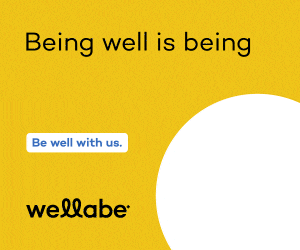Opinion: The nuanced design behind gender equality

BPC Staff Oct 3, 2016 | 1:00 pm
4 min read time
969 wordsAll Latest News, Lift IOWA, Opinion, Women’s and Gender IssuesBY LORI CHESSER | Partner and department chair, Davis Brown Law Firm
 Despite so many improvements, gender equality in the workplace (let alone in other parts of life) often seems like a chimera: something that exists only in imagination and is not possible in reality.
Despite so many improvements, gender equality in the workplace (let alone in other parts of life) often seems like a chimera: something that exists only in imagination and is not possible in reality.Iris Bohnet’s “What Works: Gender Equality by Design” shows how science can help — not by genetically modifying our human nature, but by explaining it and designing solutions within its limitations.
Bohnet is a behavioral economist at Harvard University, director of the Women and Public Policy Program and co-chair of the Behavioral Insights Group at the Kennedy School of Government. Many recommendations in her book come from her attempts to put validated research into practice in her own workplace.
Bohnet introduces the design solution using the following example: In 1970 only 5 percent of professional orchestra members in the United States were women. Now the number is 35 percent. The difference? Auditioning musicians behind a screen.
This design change was beautiful because its primary result was to improve the quality of the orchestra. Bias had been preventing orchestras from choosing the best musicians.
This change began in the 1970s in Boston and was soon adopted by most other orchestras in the U.S. By contrast, the Vienna Philharmonic, not using the blind audition design, hired its first woman in 1997. We could chalk this up to Austrians’ having a propensity for chauvinism, but I suspect that like almost all of us they were simply unaware of their biases.
Bohnet explores the pervasiveness and deep-seated nature of biases revealed in many experiments and real-world studies. She also references tools, such as Harvard’s Implicit Association Test (which you should take right now). The point of this information is not to shame us but to help us understand that biases are part of the human psyche and cannot be ignored. The good new is they can be overcome through smart design.
Not every workplace bias is as easy to address as the orchestra audition. Bohnet provides many ideas being put into practice and resources to use as starting points.
For example, unstructured interviews have been proved ineffective in predicting success on the job. They also perpetuate hiring men for traditional male roles and women for traditional female roles. Bohnet outlines ways to structure interviews or use standardized testing to make better hiring decisions that also reduce gender gaps.
The book sheds light on another persistent problem: salary negotiation. Articles encouraging women to get over their fear of salary negotiation have always seemed like recipes that suggest substituting a tablespoon of oil and an egg white if one is out of eggs. They miss the point. The research presented confirms women’s concerns about salary negotiation. They will be punished for it — most of all by other women — unless a design intervention is imposed.
She also illustrates the power of data to reveal hidden bias. A study of stockbrokers reported that women made 60 percent as much as men. Since stockbrokers work on commission, the initial conclusion was that women were simply not as good at the job as their male colleagues. A deeper analysis uncovered the fact that the women stockbrokers had been assigned lower quality accounts. When the data was controlled for account quality, the performance gap disappeared.
The reality of what we are up against can be disheartening, as Bohnet herself admits. For example, when same-sex groups were presented with a task that would help the whole group at a high cost to one person, both men and women were equally likely to volunteer to do it. When the groups were mixed-sex, men were less likely and women more likely to volunteer. Did we need a study to confirm this?
The good news is that most people can overcome bias in the right environment. Other human characteristics such as herd mentality, caring what others think of us, and rising to the occasion when no other alternative exists can all be put to use in solving the problem. And Bohnet continues to remind us that the problem is not only failing to achieve the moral imperative of inclusion but failing to fully realize talent and the benefits of diverse teams. The research supports this fact as well.
To me, the most thought-provoking finding was that changing personal beliefs is not a prerequisite to changing behavior. An exercise in Rwanda after the genocide aimed at dispelling tribal bias was unsuccessful in changing individual opinions about people in the other tribe. Nonetheless, behavior toward members of the other tribe changed positively as compared with the control group. Similarly, enforced quotas for women in rural village councils were unpopular in India. But only a few years after implementation, men and women accepted the change and saw politics as a possible career path for their daughters, leading to more support for their education.
Design solutions are nuanced, just like human nature. While some people have a “taste for bias” (as one researcher delicately put it), knowing that most biases are unconscious can free space to investigate changes that will make a difference. Bohnet presents the science; we no longer have to think that it is all in our imagination. Read the book. Act on it. Make gender equality a reality.
Lori Chesser is an attorney and chair of the immigration department at Davis Brown Law Firm in Des Moines. A Business Record Women of Influence and Forty Under 40 recipient, she received the A. Arthur Davis Distinguished Community Leadership Award from the Greater Des Moines Leadership Institute in 2015. She also chairs the board of trustees of the American Immigration Council, a Washington, D.C.-based policy and advocacy nonprofit.
CONNECTION POINTS








